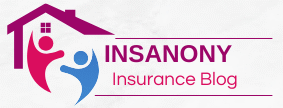Homeowners insurance is often taken for granted and not given enough thought, yet it should be prioritized by every homeowner. While myths exist surrounding this expense, deciphering fact from fiction will allow homeowners to make an informed decision regarding their policy.
Myth 1: Homeowners Insurance Covers Everything
Homeowners insurance is often an intimidating subject for individuals to navigate, with numerous myths abounding as to its coverage or lack thereof. By understanding its true scope and scope, however, smart decision-making can occur and unnecessary out-of-pocket expenses avoided altogether.
Your lender typically requires homeowners insurance if you hold a mortgage; their interest in your property means they want to ensure it is well protected, and expect that you’ll have enough coverage if anything should happen that necessitates rebuilding efforts.
Standard home insurance policies only provide limited protection, leaving many problems uninsured – including sewer backup and overflow damage, flooding and earthquakes which require separate policies.
Personal property coverage typically provides actual cash value or replacement cost minus depreciation coverage for belongings, which means they could be drastically underinsured if you don’t take the time to create an inventory and purchase additional riders or endorsements for high-value items. As such, it is imperative that you contact an insurance agent prior to investing heavily in remodelling projects, home additions or expensive items.
Myth 2: Homeowners Insurance Covers Floods
Homeowners insurance typically covers damage from natural disasters, but often fails to include flood coverage. Many homeowners find out too late that their policies don’t include flood coverage and must incur costly repair expenses themselves.
Even those living in dry climates and at higher elevations can still suffer flood damage, even a few inches of water can be enough to cause significant structural damage to homes. Though most homeowner policies offer personal property coverage up to a percentage of dwelling coverage, if your belongings exceed this amount you should secure them with separate flood insurance policy.
Unfortunately, this myth could cost homeowners dearly. While the National Flood Insurance Program offers affordable coverage options, filing even one claim could dramatically raise premiums; but this may not always be true and therefore it is crucial that your policy be reviewed on a regular basis, regardless of whether any claims have been filed in the past or not.
Myth 3: Homeowners Insurance Covers Liability
Homeowners insurance protects you against the costs of replacing or repairing belongings, defending against liability lawsuits and covering medical bills for those injured on your property. Furthermore, this policy covers living expenses should you become uninhabitable due to covered events like fire or flooding in your home.
However, homeowner insurance doesn’t provide blanket protection against all kinds of damage or disaster. Standard policies include specific exclusions such as damage from floods or earthquakes as well as normal wear and tear.
Standard policies generally only cover up to the market value less depreciation of your home, unless additional coverage has been purchased via endorsements. For instance, if a pipe bursts on a cold winter night and floods your house and damages furniture, dwelling coverage would take care of damage done to built-in items like cabinets while personal property coverage will cover ruined furniture with your deductible deduction applied against.
Myth 4: Homeowners Insurance Covers Damage from Animals
Wildlife damage can be costly. To make sure that you’re aware of how homeowners insurance covers such creatures and what’s not, as soon as any issues arise it is important to understand which animals and activities fall under coverage and which aren’t.
If wild animal damage concerns are plaguing you, consider purchasing a pest control plan or home warranty to mitigate potential issues before they escalate further. These plans can help manage these problems before they become serious and cause more lasting harm.
Be mindful that, should a neighbor’s tree fall onto your house and cause damage, their homeowners insurance won’t cover it; rather, actual cash value (which can vary from replacement cost) is used as the basis for how much to insure it instead.
Homeowners insurance usually only covers wild animals that pose a direct threat to your home itself, not preventable and periodic infestations such as squirrels. However, any structures on your property such as sheds or fences may fall under personal property coverage and be covered under this portion of your policy.
Myth 5: Homeowners Insurance Covers Damage from Trees
Homeowners insurance usually covers damage from fallen trees on your property, such as houses and structures such as fences or sheds, regardless of whether they originated on either yours or your neighbor’s properties. If however the fallen tree was overgrown and poorly maintained and therefore caused damage – you could potentially be held accountable.
Maintaining healthy and well-trimmed trees on your property for safety purposes, but also be sure to have the appropriate coverage against costly repair costs. By learning about homeowners insurance myths and working closely with your agent, you can ensure your policy suits your individual needs and is tailored specifically to them.
No one likes the feeling of thinking you have coverage only to discover they don’t when disaster strikes. Don’t let misunderstandings about your homeowners insurance cost both you and money over time; here are more myths debunked from homeowners insurance. Speak to an experienced agent now!




